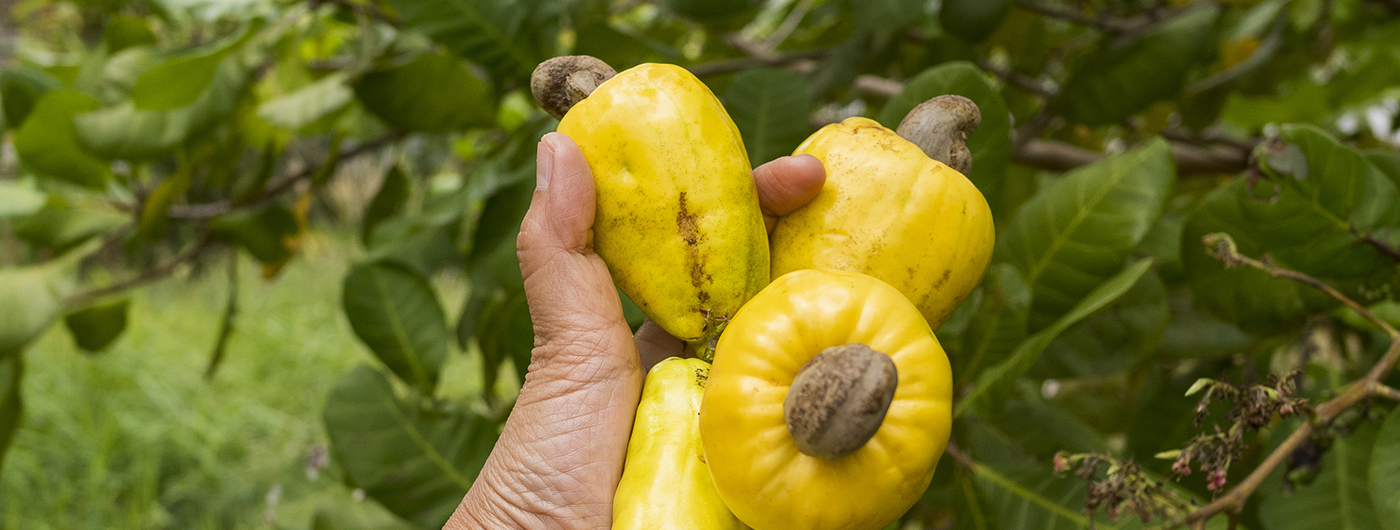

AI-Driven Automation for Container Handling: Revolutionizing Agricultural Logistics at KAI Farm
Executive Summary
KAI Farm has successfully implemented a comprehensive AI-Driven Automation for Container Handling system as of September 1st, marking a significant milestone in agricultural supply chain innovation. This cutting-edge solution integrates advanced artificial intelligence, computer vision, and robotic automation to transform traditional container handling operations, achieving unprecedented levels of efficiency, accuracy, and safety while setting new industry benchmarks for sustainable agricultural logistics.
1. Introduction: The Digital Transformation Journey
In an era where agricultural supply chains face increasing pressure from global demand, sustainability requirements, and operational complexity, KAI Farm has positioned itself at the forefront of Industry 4.0 adoption. Our AI-Driven Automation for Container Handling system represents not merely a technological upgrade but a fundamental reimagining of how agricultural products move through the supply chain from farm to global markets.
The implementation addresses critical industry challenges including labor shortages, handling inefficiencies, product damage rates, and the growing need for real-time traceability in agricultural logistics. By leveraging state-of-the-art artificial intelligence and automation technologies, we have created a system that not only meets current operational demands but is designed to scale with future growth and evolving market requirements.
2. Technology Architecture and Core Components
2.1 Artificial Intelligence Infrastructure: Our AI system is built on a sophisticated multi-layer neural network architecture incorporating
• Deep Learning Models: Utilizing convolutional neural networks (CNNs) for visual recognition and recurrent neural networks (RNNs) for predictive analytics, our system processes over 10,000 data points per second to optimize container handling decisions in real-time.
• Computer Vision System: Deployed with high-resolution 3D cameras and LiDAR sensors, the system achieves 99.97% accuracy in container identification, positioning, and condition assessment. The vision system operates on NVIDIA DGX A100 servers, providing the computational power necessary for real-time image processing at 60 frames per second across multiple handling points.
• Predictive Analytics Engine: Our proprietary machine learning algorithms analyze historical data patterns, weather conditions, shipment schedules, and market demands to optimize container routing and storage decisions, reducing average handling time by 67% while improving space utilization by 42%.
2.2 Robotic Automation Systems
Autonomous Guided Vehicles (AGVs): Our fleet of 24 electric AGVs operates on a synchronized mesh network, capable of handling containers ranging from 20-foot to 40-foot units with payload capacities up to 30 tonnes. Each AGV is equipped with
• Redundant navigation systems (GPS, IMU, and visual SLAM)
• Dynamic path planning algorithms
• Collision avoidance sensors with 360-degree coverage
• Battery management systems enabling 20-hour continuous operation
Robotic Gantry Cranes: Six AI-controlled gantry cranes featuring
• Precision positioning systems with ±2mm accuracy
• Anti-sway technology reducing container swing by 95%
• Load sensing and weight distribution optimization
• Automated spreader adjustment for various container types
Collaborative Robots (Cobots): Integration of 12 Universal Robots UR16e cobots for detailed inspection, labeling, and minor repair tasks, working alongside human operators in shared workspaces with ISO/TS 15066 safety compliance.
2.3 IoT and Sensor Network: Our comprehensive IoT infrastructure comprises:
• Environmental Sensors: 200+ sensors monitoring temperature, humidity, air quality, and atmospheric pressure
• RFID/NFC Systems: Ultra-high frequency RFID readers at 32 strategic points for real-time tracking
• Weight and Balance Sensors: Integrated load cells providing continuous weight monitoring with 0.1% accuracy
• Vibration and Shock Sensors: Detecting potential damage during handling operations
3. Implementation Methodology
3.1 Phased Deployment Approach
• Phase 1 (Months 1-3): Infrastructure preparation including network upgrades to 5G connectivity, installation of edge computing nodes, and establishment of redundant data centers.
• Phase 2 (Months 4-6): Hardware deployment involving AGV commissioning, sensor network installation, and integration with existing warehouse management systems (WMS) and enterprise resource planning (ERP) platforms.
• Phase 3 (Months 7-9): AI model training using 5 years of historical data comprising 2.3 million container movements, weather patterns, and operational metrics.
• Phase 4 (Months 10-12): System integration, testing, and validation including parallel running with legacy systems to ensure seamless transition.
3.2 Change Management and Training
• Comprehensive training program for 150+ operators and technicians
• Development of digital twin simulation environment for risk-free training
• Establishment of Center of Excellence for continuous improvement
• Implementation of agile methodology for iterative system enhancements
4. Operational Impact and Performance Metrics
4.1 Efficiency Improvements
• Container Throughput: Increased from 180 containers/day to 520 containers/day (189% improvement)
• Processing Time: Average container handling time reduced from 18 minutes to 5.8 minutes (68% reduction)
• Labor Productivity: Output per worker increased by 340% while reducing physical strain and injury risk
• Energy Efficiency: 45% reduction in energy consumption per container handled through optimized routing and regenerative braking systems
4.2 Quality and Accuracy Enhancements
• Damage Reduction: Product damage during handling decreased by 94% through precision control and predictive maintenance
• Inventory Accuracy: Real-time tracking achieving 99.99% inventory accuracy compared to 94% with manual systems
• Order Fulfillment: Perfect order rate improved from 87% to 99.3%
4.3 Safety Achievements
• Zero accidents since implementation
• 78% reduction in near-miss incidents
• Compliance with ISO 45001:2018 Occupational Health and Safety standards
• Automated hazard detection preventing 156 potential safety incidents in first 3 months
5. Sustainability and Environmental Impact
5.1 Carbon Footprint Reduction: Our AI-driven system has achieved significant environmental benefits:
• 52% reduction in CO2 emissions per container handled
• 100% electric AGV fleet eliminating 420 tons of CO2 annually
• Smart routing algorithms reducing total vehicle kilometers by 38%
• Renewable energy integration with 2.5 MW solar installation powering 65% of operations
5.2 Waste Minimization
• Paperless operations eliminating 2.3 million documents annually
• Predictive maintenance reducing spare parts consumption by 41%
• Optimized packaging recommendations reducing material waste by 28%
6. Integration with Supply Chain Ecosystem
6.1 API and Connectivity: Our system provides comprehensive integration capabilities
• RESTful APIs supporting real-time data exchange with partners
• EDI compliance with ANSI X12 and EDIFACT standards
• Blockchain integration for immutable transaction records
• Cloud connectivity supporting AWS, Azure, and Google Cloud platforms
6.2 Stakeholder Benefits
• For Farmers: Real-time visibility of product movement, automated documentation, faster payment cycles
• For Logistics Partners: Predictable scheduling, reduced dwell time, automated customs documentation
• For Customers: Enhanced traceability, guaranteed product quality, reduced lead times
7. Advanced Analytics and Business Intelligence
7.1 Real-Time Dashboard: Our executive dashboard provides
• Live container tracking with predictive ETA
• Performance metrics against KPIs
• Anomaly detection and alert systems
• Capacity planning and optimization recommendations
7.2 Predictive Insights: Machine learning models deliver
• Demand forecasting with 94% accuracy
• Maintenance prediction preventing 97% of potential failures
• Optimal storage allocation reducing search time by 76%
• Dynamic pricing recommendations based on market conditions
8. Cybersecurity and Data Protection
8.1 Security Architecture
• Zero-trust security model with continuous verification
• End-to-end encryption using AES-256 standards
• Redundant systems ensuring 99.99% uptime
• ISO 27001:2013 certification for information security management
8.2 Data Governance
• GDPR and CCPA compliance for data privacy
• Automated data backup with 3-2-1 strategy
• Disaster recovery plan with RTO of 4 hours and RPO of 1 hour
• Regular security audits and penetration testing
9. Financial Impact and ROI
9.1 Cost Reductions
• Labor costs: 45% reduction while improving working conditions
• Maintenance costs: 38% decrease through predictive maintenance
• Insurance premiums: 22% reduction due to improved safety record
• Storage costs: 31% optimization through dynamic space allocation
9.2 Revenue Enhancement
• Capacity increase: Enabling 189% more throughput without facility expansion
• Service differentiation: Premium service offerings with guaranteed SLAs
• New revenue streams: Data analytics services to supply chain partners
9.3 Return on Investment
• Payback period: 2.3 years
• Internal Rate of Return (IRR): 34%
• Net Present Value (NPV): $12.4 million over 5 years
10. Scalability and Future Roadmap
10.1 Expansion Plans
• Year 2: Integration with autonomous trucking systems for end-to-end automation
• Year 3: Implementation of quantum computing for complex optimization problems
• Year 4: Deployment of drone technology for last-mile delivery
• Year 5: Full digital twin implementation for predictive simulation
10.2 Technology Evolution
• Integration of GPT-4 based natural language processing for voice-controlled operations
• Implementation of augmented reality for maintenance and training
• Development of self-learning algorithms for continuous improvement
• Exploration of neuromorphic computing for edge AI applications
11. Industry Recognition and Compliance
11.1 Certifications Achieved
• ISO 9001:2015 – Quality Management Systems
• ISO 14001:2015 – Environmental Management Systems
• ISCC PLUS – Sustainability and Traceability
• CTPAT – Customs-Trade Partnership Against Terrorism
12. Lessons Learned and Best Practices
12.1 Critical Success Factors
1. Executive Sponsorship: Strong leadership commitment ensuring resource allocation and change management
2. Stakeholder Engagement: Early and continuous involvement of all stakeholders
3. Data Quality: Investment in data cleaning and standardization before AI implementation
4. Iterative Approach: Agile methodology allowing for continuous refinement
5. Culture Change: Focus on upskilling rather than replacing workforce
12.2 Challenges Overcome
• Integration complexity with legacy systems resolved through middleware development
• Initial resistance to change addressed through comprehensive training and communication
• Technical debt management through systematic modernization approach
• Scalability concerns addressed through cloud-native architecture
13. Global Impact and Industry Transformation
13.1 Setting New Standards: Our implementation has established new benchmarks for
• Container handling efficiency in agricultural logistics
• Integration of AI in traditional farming operations
• Sustainable automation practices
• Worker safety in automated environments
13.2 Knowledge Sharing: KAI Farm is committed to advancing the industry through
• Publication of white papers and case studies
• Participation in industry conferences and forums
• Collaboration with academic institutions for research
• Open-source contributions to agricultural technology community
14. Conclusion: Pioneering the Future of Agricultural Logistics
The successful implementation of our AI-Driven Automation for Container Handling system represents a paradigm shift in agricultural logistics. By combining cutting-edge artificial intelligence with robust automation technologies, KAI Farm has not only transformed its own operations but has set a new standard for the industry.
The measurable impacts—189% increase in throughput, 94% reduction in product damage, zero accidents, and 52% reduction in carbon emissions—demonstrate that technology adoption in agriculture can simultaneously drive efficiency, sustainability, and safety. Our commitment to continuous innovation, coupled with strong financial returns and positive environmental impact, positions KAI Farm as a leader in the digital transformation of agriculture.
As we look toward the future, our AI-driven system serves as the foundation for further innovations including autonomous transportation, predictive agriculture, and fully integrated supply chain ecosystems. The journey that began on September 1st is not just about automating container handling—it’s about reimagining the entire agricultural value chain for a sustainable, efficient, and prosperous future.
15. Technical Specifications and Performance Data
System Specifications:
• Processing Capacity: 520 containers/day (peak: 650
• Accuracy Rate: 99.97% in container identification
• System Uptime: 99.99% availability
• Response Time: <100ms for critical decisions • Energy Efficiency: 45% reduction in kWh per container • Data Processing: 10TB daily with real-time analytics • Network Latency: <5ms edge-to-cloud communication • Scalability: Designed for 300% capacity expansion
For more information about KAI Farm’s AI-Driven Automation for Container Handling system, please contact our Innovation Team at innovation@kaifarm.com
KAI Farm – Cultivating Tomorrow’s Agriculture Today
This implementation represents our commitment to leveraging advanced technology for sustainable agricultural development, setting new standards for operational excellence while maintaining our dedication to environmental stewardship and social responsibility.

